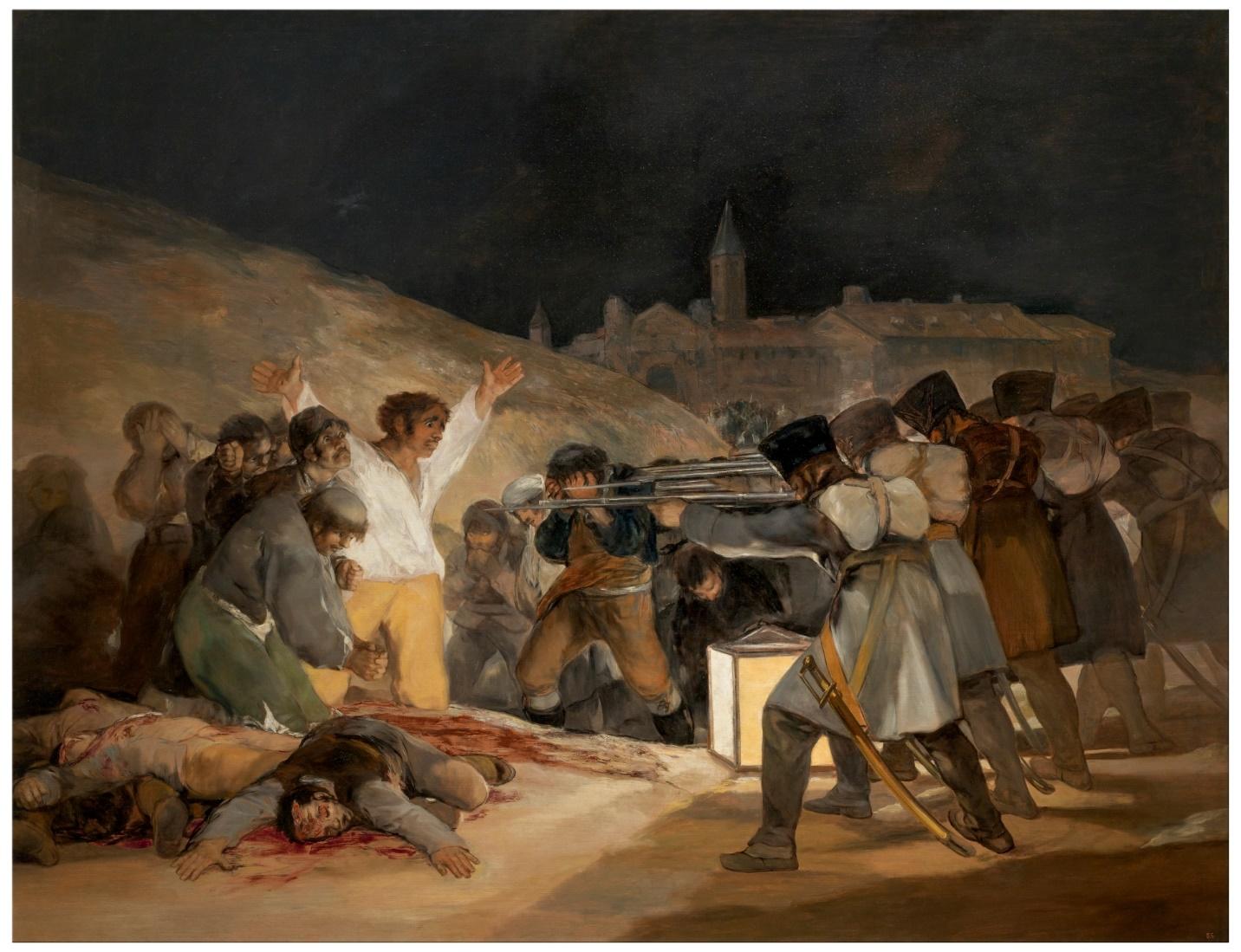Cultural Artifacts
The first selected cultural artifact is the poem “The Colonel” by Carolyn Forché. It was written in El Salvador in 1978 in the middle of a civil war between the US-backed military and government on the one side and the Foarabundo Martí National Liberation Front on the other side. The second chosen artwork is the painting entitled “The 3rd of May 1808” by Francisco Goya (see Figure 1). It was created in 1814, commissioned by the provisional government, and designed to commemorate the Spanish resistance to the occupation by Napoleon’s army. The painting is currently located in the Museo del Prado, Madrid.

Common Theme
It is important to note that the common theme shared by the two works is war. In “The Colonel,” Forché (1978) hints at war right at the beginning of the poem, mentioning “a pistol on the / cushion beside him” (para. 1). However, war is most clearly revealed when Forché (1978) describes how the colonel brought a sack and “spilled many human ears on the table” (line 17). The author does not try to romanticize violence, but instead, she shows war as it is to make the audience realize how atrocious warfare is. In “Third of May 1808,” Goya (1814) depicts a brutal scene from the Spanish revolt, showing the captives being killed by the firing squad. Both works directly showcase the major implications of any war, where violence and hostility become predominant forces, which lead to many deaths and suffering.
Personal Experience
I am aware of the theme of war only from history textbooks and films. Fortunately, I did not experience the real implications of such conflict, which is why my experience is only valid to understand how peace is valuable and important. Whenever I observe the selected art or read the selected poem, I become more grateful to live in a time and place where no wars occur. It is evident that in some nations, war is part of one’s everyday life, which makes me compassionate. These works of art showcase the overwhelming pressure, danger, and stress inflicted by mass conflict. Therefore, the selected works make me grateful to live in such a peaceful world, where most people are fortunate to never witness any warfare and its implications.
References
Forché, C. (1978). The colonel. Poetry Foundation. Web.
Goya, F. (1814). The 3rd of May 1808 in Madrid, or “The executions.” Museo del Prado. Web.